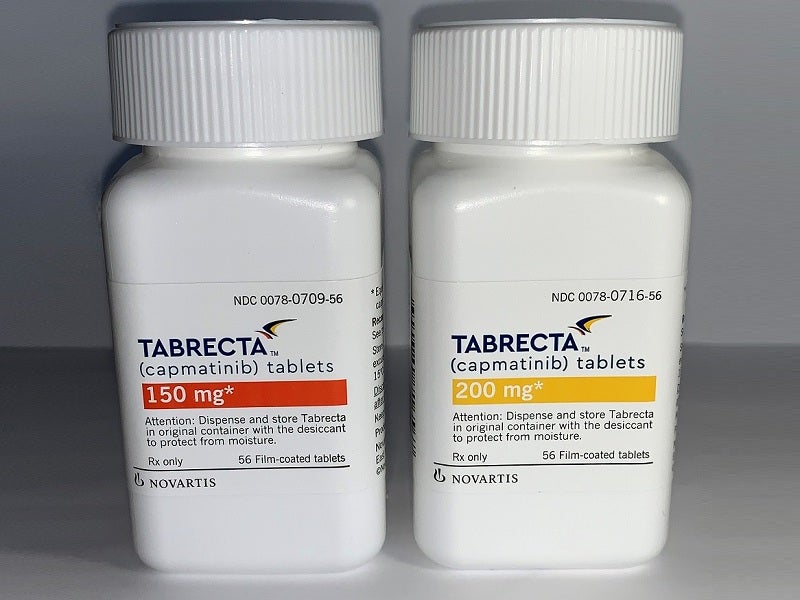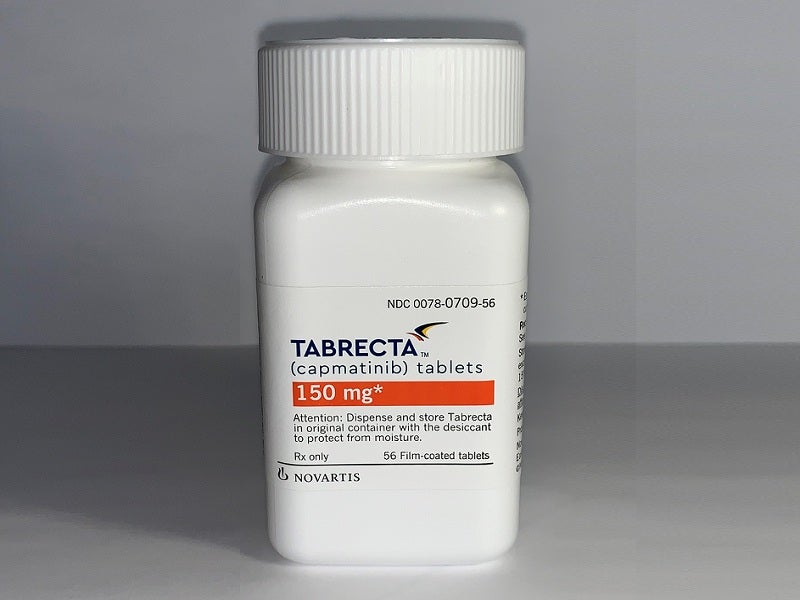Tabrecta™ (capmatinib) is the first US Food and Drug Administration (FDA)-approved therapy for the treatment of adult patients diagnosed with metastatic non-small cell lung cancer (NSCLC) whose tumours have a mutation that results in mesenchymal-epithelial transition (MET) exon 14 (METex14) skipping.
It is a prescription medicine indicated for first-line and previously treated patients, regardless of prior therapy type.
The kinase inhibitor was licensed to Novartis by Incyte, a biopharmaceutical company based in the US, in 2009. Under the terms of the licence, Novartis has global exclusive development and marketing rights to capmatinib and other back-up compounds in all indications.
Tabrecta approvals
Novartis submitted the new drug application (NDA) for the use of Tabrecta (capmatinib) to the FDA in December 2019. The MET inhibitor was granted priority FDA review in February 2020.
The FDA approved the therapy under the provisions of accelerated approval regulations based on the overall response rate and duration of response, in May 2020. It also approved FoundationOne®CDx for use as a companion diagnostic for Tabrecta to assist in the identification of mutations that contribute to METex14 skipping in tumour tissue.
The regulator previously granted breakthrough therapy and orphan drug designations to Novartis for capmatinib.
In June 2020, Tabrecta received approval from the Japanese Ministry of Health, Labour, and Welfare (MHLW) for use in the treatment of METex14 mutation-positive advanced or recurrent unresectable NSCLC.
The medicine is expected to be available to patients in the US in the coming days.
Tabrecta (capmatinib) will be available as oral film-coated tablets with a recommended dosage of 400mg twice a day.
Non-small cell lung cancer (NSCLC) causes and symptoms
Non-small cell lung cancer (NSCLC) is a complex disease in which malignant (cancer) cells develop in the tissues of the lung.
NSCLC is the most common form of lung cancer, which accounts for approximately 85% of over two million new cases of lung cancer per year globally.
Approximately 70% of patients with NSCLC have a genetic mutation. Smoking is the most important risk factor for NSCLC condition.
NSCLC is associated with several potential mutations that can encourage the development of cancer. MET exon 14 skipping is regarded as an oncogenic driver.
METex14 appears in approximately 3-4% of newly diagnosed metastatic NSCLC cases (approximately 4,000-5,000 cases annually in the US).
Symptoms of NSCLC include persistent coughing, shortness of breath, chest pain, hoarseness, harsh sounds, wheezing, weight and appetite loss, fatigue and bronchitis or pneumonia.
Capmatinib mechanism of action
Capmatinib (formerly INC280) is a kinase inhibitor targeting MET, including a mutant version formed by MET exon 14 skipping.
METex14 skipping leads to a protein with a missing regulatory domain that decreases its negative regulation, resulting in increased MET downstream signalling.
Capmatinib suppressed cancer cell growth caused by exon 14 skipping at clinically feasible concentrations and exhibited anti-tumour efficacy in murine tumour xenograft models of human lung tumours with either a mutation contributing to METex14 skipping or MET amplification.
It inhibited MET phosphorylation caused by binding of the hepatocyte growth factor (HGF) or MET amplification, as well as MET-mediated downstream signalling protein phosphorylation and proliferation and survival of MET-dependent tumour cells.
Clinical trials on Tabrecta
FDA approval of Tabrecta is based on the GEOMETRY mono-1 Phase II multi-centre, open-label, non-randomised, multi-cohort study.
The study evaluated a total of 97 adult patients including 69 previously treated patients and 28 treatment-naive patients following central confirmation of METex14 skipping. Enrolled patients were assigned to Cohorts 4 or 5b and received Tabrecta 400mg tablets orally two times a day until disease progression or unacceptable toxicity.
The study used the overall response rate (ORR) and duration of response (DOR) as efficacy outcome measures.
Confirmed ORR was 41% and 68% among previously treated patients and treatment-naive patients, respectively.
Median DOR was found to be 9.7 months in previously treated patients (28 responders) and 12.6 months in treatment-naive patients (19 responders). The most common side effects observed in the patients during the trial were nausea, vomiting, fatigue, shortness of breath, decreased appetite and peripheral oedema.










